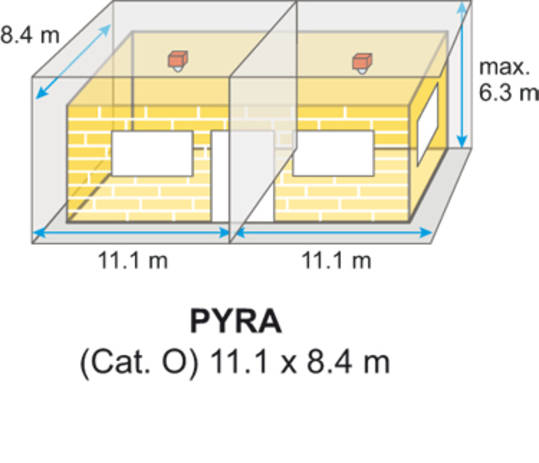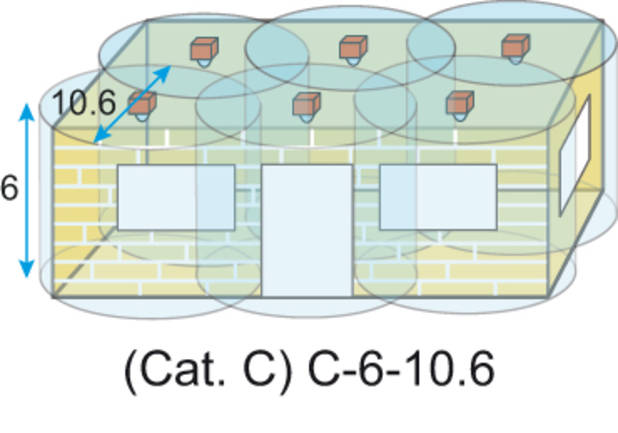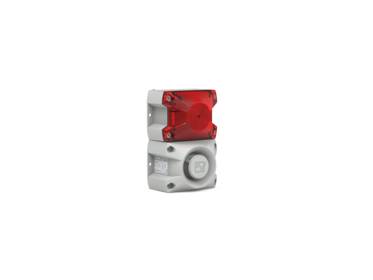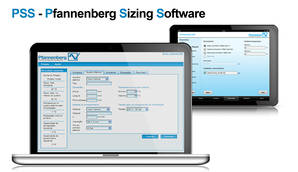Your benefits by using flashing lights certified with EN 54-23:
- Planning dependability in project management
- Guaranteed compliant fire alarm systems
- Minimisation of liability risk
- For system integrators and manufacturer of fire alarm systems: Security regarding system requirements and compatibility
- For building operators: Possible reduction in insurance premium
Background and technical documents for the new standard
Acoustic "smog" is just one factor that makes it more difficult to perceive and correctly interpret an alarm signal. According to estimates of the World Health Organisation from 2005, 278 million people throughout the world are affected by hearing impairments varying from minor to severe. For this reason and in view of not discriminating against disabled people (in Germany and other countries this is regulated by the Equal Opportunities for People with Disabilities Acts), visual signaling devices are increasingly being used as a supplement to audible signals. In order to guarantee the required equality and thus ensuring that everyone has easy access to all areas, an alerting of at least 2-senses is necessary (e.g. in accordance with DIN 18040-1, chapter 4.4). Therefore, visual alerting is required in addition to the audible kind. This does not only apply to fire alarm systems but also for alerts through house alarm systems or hazard warning systems.
Using an additional visual alarm also applies in environments with very high noise levels where a safe perception of the audible signal is not always assured. While a regulation for such devices has been in effect for a long time in the American market in NFPA 72, there were no technical rules that prescribed the capability of optical devices in Europe. This has now changed. In many cases of alarms in which up to now solely an audible signal has been installed, an additional visual signal must be used. With the EN 54-23 taking effect, demands are also being made regarding the light output and light distribution.

The requirements of EN 54-23 in practice
Illumination
An illumination of min. 0.4 lux (lm/m²) is required over the entire coverage volume, i.e. the space in which the alarm signal is to be effective (e.g. production facilities).
Light colour
The visual signaling device must emit white or red flashing light.
Flash rate
The flash rate must be between 0.5 Hz and 2 Hz.
Coverage volume
Visual alarm devices must meet the requirements for the coveragevolume in at least one of the following three categories: ceiling mounted signaling device C; wall mounted signaling device W; or O for signaling devices for which the mounting position is freely selectable.
In order to achieve this, the light intensity of the signaling device must be significantly higher than those used in the past. This also entails an increased power consumption.
Mounting categories
Ceiling mounted (C)
Devices from category C are described with the specification C-x-y. “x” stands for the measured maximum installation height in meters (m) at which the signaling device may be placed. Whereas “y” specifies the diameter of the cylindrical coverage volume. Besides the specification of the cylindrical signaling space the devices are only classified for heights up to 3 to 6 or up to 9 m.
For example: C-3-7.5. stands for a ceiling mounted signaling device with a cylindrical coverage volume of 7.5 m diameter and a maximum mounting height of 3 m.

Wall mounted (W)
Category W devices are described with W-x-y. “x” stands for the maximum height of the signaling device on the wall specified in meters (m) with a minimum installation height of 2.4 m. “y” describes the square base area of the square coverage volume.
For example: W-2,4-8 stands for a wall mounted signaling device with a cuboid coverage volume of 2.4 m x 8 m x 8 m, if mounted at a height of 2.4.

Open mounting position (O)
For category O devices the shape of the coverage volume and the mounting position of the signaling device is open. This means there are no restrictions on the formation of the coverage volume. From the user's perspective this is the most flexible and economical solution, because there is no need to differentiate between ceiling and wall installation (minimisation of inventory) and the greatest possible coverage volume of the signaling device is achieved.
Conclusion and Recommendation
Category O devices are the most flexible solution
The signaling device can be optionally mounted on the ceiling, wall or another position, whereas category C and W devices are only allowed to be mounted according to their classification.
Category O devices are the most economical solution
Only one signaling device is required for all mounting positions. This avoids having to keep double stock.
No restriction with the mounting height – devices with the identifier C-3-y are not approved for ceiling heights of 3.2 m for example and a device of category C-6-y has to be taken, which would be far too oversized for this application.
The shape of a cylinder is generally not compatible with the shape of rooms. The actual coverage volume of the device is firstly reduced to a cylinder shape. In order to then be in a position to use the shape of the cylinder and to make planning possible, it is necessary to further reduce the coverage volume to the largest possible quadratic area. This automatically requires the use of a larger number of signaling devices in order to ensure alarming of the room.
The shape requirement with quadratic base area for category W devices means that the actual coverage volume that the device could cover is reduces in certain places. As a result of the artificially reduced coverage volume, an increased number of devices is necessary.
Category O devices are subject to no restrictions, so the formation of the largest possible coverage volume in the form of a freely selectable cuboid is possible.

Application example
Calculation
As an example, a room of 20 m length, 8 m width and 3 m height is to be signalled. Planning with the following three devices is compared:
The Pfannenberg PYRA® flashing light (category O) with the following coverage volume 11.1 m x 8.4 m x 6.3 m.

The same device, however if it were only approved for ceiling-mounting. Coverage volume C-6-10.6. (see advantages of category O).

A comparable device of category C-3-7.5. On account of the specified coverage volumes, the following quantities for visual signaling devices arise.

Please find here a sample for a possible cost calculation

The consequences from planning to putting into operation
…for planners and specifiers
- Modification of the contractual basis
- Modification of the tendering text / items
- Consideration in all current and future projects
- Information for the ordering customer
- Testing and acceptance of the visual signaling device
...for fire detection technology experts
- Define the basis for testing/demand for certificates
- Testing the function of the visual signaling device and matching with data sheet
…for system integrators
- Creation of a system approval according to EN 54-13
- Implementation of EN 54-23 approved visual signaling devices in the system
...for installers and specialist companies
- Consideration in all current and future projects, inform on erroneous items in the tender, possibly revision
- Information for the ordering customer
- Modification of the offers
...for building operators
- Review of the contractual documents
- Information to the planning company
Award
Flashing sounders PA X from the PATROL series had been honoured with the red dot award:

EN 54-23 certified products
| Description | Language | Type | Size | Download |
|---|---|---|---|---|
Support for Planning PY X-S & PA X 1-05 clear |
|
1.3 MB | Download | |
Support for planning PY X-M-05 (SSM) |
|
840 KB | Download | |
Support for planning PY X-M-10 (SSM) |
|
840 KB | Download | |
Coverage volume PY X-S-05 |
|
220 KB | Download | |
EN 54-23 certificate PY X-S-05 |
|
69 KB | Download | |
EN 54-23 certificate PA X 1-05 |
|
83 KB | Download | |
EN 54-23 certificate (SSM) |
|
340 KB | Download | |
VdS approval PY X-S-05 |
|
690 KB | Download | |
VdS approval PA X 1-05 |
|
730 KB | Download | |
VdS approval (SSM) |
|
660 KB | Download | |
White Paper EN 54-23 |
|
380 KB | Download | |
EN 54-23 Brochure |
|
2.7 MB | Download |





